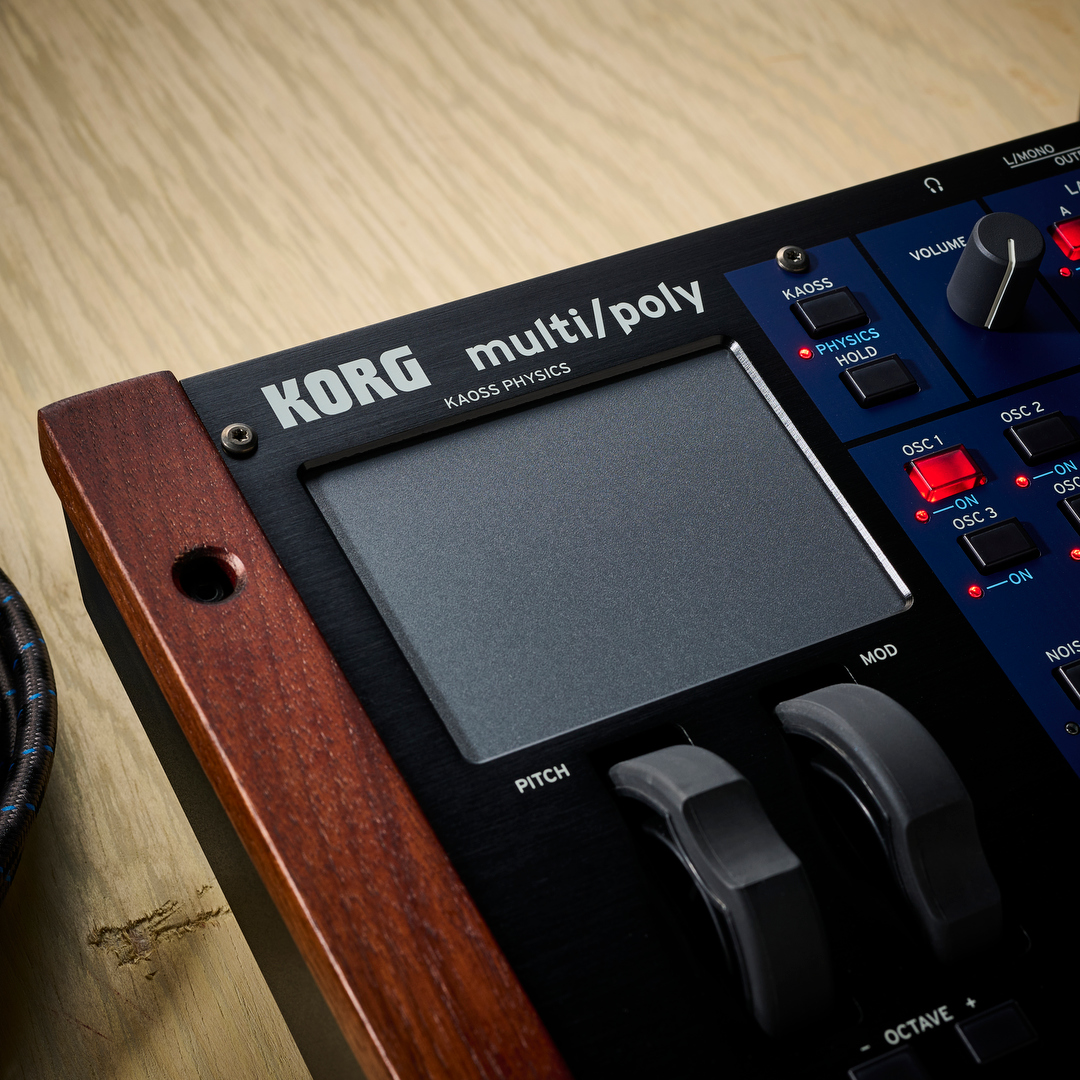Korg’s Multi/Poly is a versatile new synth that takes influence from an ‘80s cult classic
It looks like a Mono/Poly in modern clothing, but is Korg’s latest more than that?

Korg has unveiled the latest in its line of compact digital synths, Multi/Poly, a multi-timbral instrument described by Korg as using ‘next generation analogue modelling’.
Much like the Wavestate before it, Multi/Poly’s name and styling is inspired by a classic synth from Korg’s past, in this case 1981’s Mono/Poly. Where the Mono/Poly was a four-voice paraphonic synth, however, Multi-Poly is 60-voice polyphonic, with four distinct synth layers.
SEE MORE: Read our full Korg Multi/Poly review
At the heart of Multi/Poly are virtual voice cards, with oscillators, filters, LFOs, amps, envelopes and portamento all designed to emulate the behaviour of analogue circuitry.
“Just like in an analogue synthesizer, voice cards continue to play even if you’re not hearing them,” Korg says. “Envelopes evolve naturally, meaning if you play a long pad with an extended release time, newly played notes ‘catch’ the envelope at its current state rather than restarting from zero. Oscillators and LFOs maintain phase, while resonance continues to ring out. Pitch drift mimics the subtle instabilities of true analogue hardware.”
As well as emulating the behaviour of analogue instruments generally, Multi/Poly – like other recent Korg synths – includes elements that emulate the filter and amp behaviours of specific vintage instruments. These include models of the MS-20 filters, Moog, Oberheim and Sequential filter designs and, naturally, the filter of the original Mono/Poly.





Despite the virtual analogue tech and its reference to classic Korg hardware, as we’ve highlighted in our review, thinking of Multi/Poly as a virtual analogue synth is something of a misnomer. Along with virtual analogue waveforms, each of Multi/Poly’s four oscillators can also use wavetables or a digital waveshaper.
Want all the hottest music and gear news, reviews, deals, features and more, direct to your inbox? Sign up here.
The synth also has modulation capabilities that go well beyond what an analogue instrument could achieve, with four 6-stage envelopes and five LFOs feeding into a complex mod matrix that can apply modulation processors to alter modulation routings.
Other highlights include Korg’s Motion Sequencing 2.0 technology, which offers independent sequencing of pitch, timing, parameter automation and more. There’s also a capable multi-part effects engine. Multi/Poly also features the Kaoss Physics touchpad first seen on the Modwave, which allows parameters to be modulated across an X/Y space using the movement of a virtual bouncing ball.
Possibly the most distinctive feature here is the Layer Rotate mode, which emulates the way Mono/Poly could alternate its oscillators in a round robin manner with each new note played. Here, however, rather than using individual oscillators, Multi/Poly alternates between its four timbral layers.
The synth hardware itself is similar to that of Korg’s Wavestate, Modwave and Opsix. It features a 37-note semi-weighted keyboard with velocity and release velocity sensitivity. It features MIDI I/O and USB connectivity, which can send/receive MIDI as well as make use of Korg’s Librarian app, for managing patches and uploading user wavetables.
The Multi/Poly is available to pre-order now priced at £799/$899. You can hear it in action in our video review above, or find out more at the Korg website.


I'm the Managing Editor of Music Technology at MusicRadar and former Editor-in-Chief of Future Music, Computer Music and Electronic Musician. I've been messing around with music tech in various forms for over two decades. I've also spent the last 10 years forgetting how to play guitar. Find me in the chillout room at raves complaining that it's past my bedtime.